Table of Contents
Introduction
Kiln-dried logs are quickly gaining popularity as a reliable and efficient firewood option for homeowners and businesses alike. Unlike traditional seasoned logs, kiln dried logs undergo a controlled drying process that reduces their moisture content to less than 20%. This results in logs that burn hotter, cleaner, and more consistently, making them ideal for wood-burning stoves, open fireplaces, and outdoor fire pits. Whether you’re looking to reduce your environmental impact or simply want a better heating experience, kiln-dried logs offer a premium solution with several distinct advantages over other types of firewood.
What Are Kiln-Dried Logs?
Kiln-dried logs are firewood that has been dried in a specialized kiln, a chamber that uses heat to remove moisture from the wood. The drying process typically reduces the moisture content of the logs to 20% or less, making them ideal for burning.
In comparison to naturally seasoned logs, which can take months or even years to dry properly, kiln-dried logs are prepared in a controlled environment over a much shorter period, often just a few days. The use of high temperatures in the kiln accelerates the evaporation of water from the wood, ensuring a consistent and even dryness throughout the logs. This uniformity in moisture content is crucial for efficient combustion, as wetter logs burn less effectively, produce more smoke, and release less heat.
Kiln-drying also helps eliminate pests, mould, and fungi that might be present in the wood, making the logs not only cleaner but also safer for indoor storage and use. Thanks to this process, kiln-dried logs are considered superior for wood-burning stoves, fireplaces, and outdoor fire pits, as they ignite more easily and burn hotter and cleaner than logs with higher moisture content.
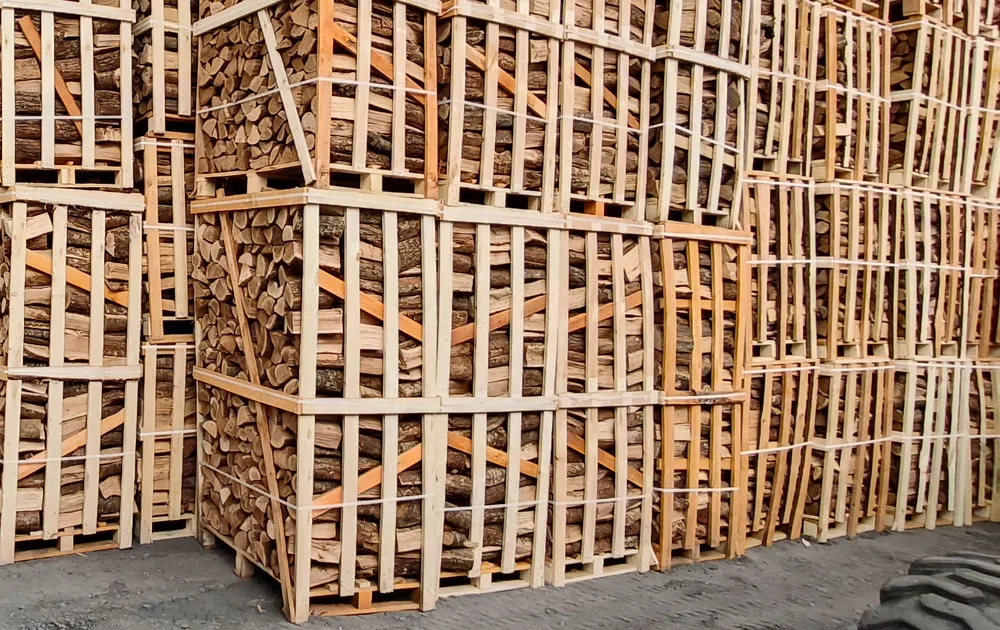
Benefits of Using Kiln Dried Logs
1. High Energy Efficiency
Kiln-dried logs have significantly lower moisture content (usually below 20%) compared to traditional seasoned or green logs. This results in a more efficient burn, as less energy is wasted evaporating excess moisture. The drier wood allows for quicker ignition and a hotter, longer-lasting fire, meaning more heat output from fewer logs, ultimately saving both time and money.
2. Cleaner Burn
Due to their low moisture content, kiln-dried logs produce far less smoke and creosote buildup than green or damp wood. This not only improves air quality, reducing harmful emissions, but also helps keep chimneys and flues cleaner, reducing the need for frequent maintenance and lowering the risk of chimney fires. The reduced soot and ash also make kiln-dried logs ideal for wood-burning stoves and fireplaces, leaving less residue to clean.
3. Ease of Use
Kiln-dried logs are ready to use immediately after purchase, eliminating the need for additional drying or seasoning time. Their lightweight and dry nature make them easier to handle, stack, and store. Furthermore, because they are resistant to mould and rot, they have a longer shelf life when stored properly, allowing users to buy in bulk without worrying about logs degrading over time. This convenience makes kiln-dried logs an ideal choice for anyone seeking a reliable and efficient firewood option.
How Kiln-Dried Logs Compare to Other Firewood
When choosing firewood for heating, kiln dried logs offer several advantages over other types of wood, including seasoned logs, green logs, and compressed wood briquettes. Here’s how they compare:
Kiln-Dried Logs vs Seasoned Logs
Kiln-dried logs undergo a controlled drying process in a kiln, reducing their moisture content to below 20%, whereas seasoned logs are naturally air-dried over several months. This difference in drying methods has a significant impact:
- Lower Moisture Content: Kiln-dried logs are much drier than seasoned logs, which typically retain a higher moisture content (around 25%–30%). This lower moisture level allows kiln-dried logs to burn more efficiently and produce more heat.
- Cleaner Burn: Kiln-dried logs produce less smoke and creosote buildup, making them safer and less likely to clog chimneys compared to seasoned logs, which may still contain some moisture and cause more soot.
- Immediate Use: While seasoned logs require a long drying period, kiln-dried logs are ready to burn as soon as you receive them, making them more convenient.
Kiln-Dried Logs vs Green Logs
Green logs are freshly cut wood and contain high levels of moisture, often over 50%. This has several negative effects:
- Poor Combustion: Green logs are difficult to ignite and burn inefficiently due to their high moisture content. The energy from the fire is first used to evaporate the water in the logs, producing less heat and more smoke. In contrast, kiln-dried logs burn easily and efficiently, providing more heat output.
- Increased Creosote Build-Up: Burning green logs releases more creosote—a highly flammable substance that can accumulate in chimneys and lead to potential fire hazards. Kiln-dried logs, with their low moisture content, burn cleaner and greatly reduce this risk.
Kiln-Dried Logs vs Compressed Wood Briquettes
Compressed wood briquettes are made from wood waste materials like sawdust and wood shavings, compacted into dense blocks. While they are efficient for heating, kiln dried logs offer some distinct advantages:
- Natural Aesthetic: Many people prefer the traditional look and feel of real logs over the uniform, compacted appearance of wood briquettes, especially for open fireplaces or wood stoves.
- Heat Output: While briquettes can produce a steady heat output, kiln-dried logs provide a more natural flame and can be used in various fire settings, including stoves, fireplaces, and outdoor fire pits.
- Cost: Briquettes can sometimes be more expensive than kiln-dried logs, especially when considering the volume needed. However, both are highly efficient and long-lasting options.
Overall, kiln-dried logs offer a balance between efficiency, cleanliness, and the aesthetic appeal of natural wood. They provide a more reliable and efficient heating option compared to seasoned or green logs and maintain a traditional feel over the more industrial appearance of wood briquettes.
Best Practices for Storing Kiln-Dried Logs
Storing kiln-dried logs correctly is essential to maintain their low moisture content and ensure they burn efficiently. Improper storage can lead to rehydration, reducing their effectiveness and shelf life. Here are the best practices for keeping kiln-dried logs in top condition:
1. Store in a Dry, Ventilated Space
- Kiln-dried logs should be stored in a location protected from moisture, such as a garage, shed, or log store with a roof.
- Ensure the storage area is well-ventilated to prevent dampness. Good airflow will help keep the logs dry and prevent mould growth.
2. Keep Off the Ground
- Elevate your logs off the ground using pallets, bricks, or a log rack. Storing them directly on the ground increases the risk of moisture absorption from the earth, which can damage the logs and cause them to become damp.
- This also improves airflow around the logs, further reducing moisture buildup.
3. Cover the Logs Properly
- Use a tarpaulin or waterproof cover to protect your logs from rain, but ensure the cover does not completely enclose the logs. A fully sealed cover can trap moisture and lead to condensation.
- Leave the sides partially exposed for ventilation, allowing air to circulate while still keeping rainwater off.
4. Avoid Stacking Against Walls
- Do not stack kiln-dried logs directly against walls or fences, as this can restrict airflow and cause moisture to accumulate.
- Always leave a small gap between the logs and any wall surface to allow air to flow freely around the logs, keeping them dry.
5. Rotate Older Logs to the Front
- Practice a “first-in, first-out” system to ensure you use the oldest logs first. This helps prevent any logs from sitting unused for too long and potentially reabsorbing moisture.
- Regularly check your log stack to make sure none of the logs have become damp or mouldy, and use those first if necessary.
By following these best practices, you can ensure your kiln dried logs remain dry, efficient, and ready to burn when needed. Proper storage will also help maximize the longevity and value of your firewood.

Where to Use Kiln-Dried Logs
Kiln dried logs are versatile and can be used in various heating systems and settings. Their low moisture content makes them ideal for clean, efficient burning, and they are suitable for both indoor and outdoor use. Here’s a look at where kiln-dried logs are most commonly used:
1. Wood-Burning Stoves
Kiln-dried logs are an excellent choice for wood-burning stoves. Since they contain very little moisture (usually less than 20%), they ignite quickly and produce a consistent, high heat output. This makes them particularly effective in stoves, where controlled heat is necessary for optimal energy efficiency. The clean burn also reduces creosote buildup in the chimney, decreasing the need for frequent maintenance and lowering the risk of chimney fires.
2. Open Fireplaces
For those who enjoy the ambiance of an open fire, kiln dried logs are a great option. They burn cleaner than traditional seasoned or green wood, producing less smoke and fewer sparks. This makes them safer for open fireplaces and more pleasant to use indoors, as there’s less risk of filling the room with smoke. Additionally, they generate a longer-lasting flame, providing warmth and atmosphere throughout the evening.
3. Outdoor Fire Pits
Kiln-dried logs are perfect for outdoor fire pits and fireplaces, whether for warmth, cooking, or simply enjoying a cozy evening outside. Because of their low moisture content, they ignite faster and burn more evenly than other wood types, making them easy to manage during outdoor gatherings. The reduced smoke is also a plus, ensuring that guests aren’t overwhelmed by unpleasant fumes.
4. Pizza Ovens and BBQs
For wood-fired cooking enthusiasts, kiln dried logs offer a great fuel source. They produce a high, consistent heat, making them ideal for pizza ovens, BBQ grills, and other outdoor cooking setups. The clean, efficient burn ensures minimal ash and residue, while the steady flame helps achieve the perfect cooking temperature, whether you’re baking pizza or grilling meat.
5. Campfires
If you’re planning a camping trip, bringing along kiln-dried logs can make the experience more enjoyable. They are easier to light and produce less smoke, which is especially important when camping in areas with restrictions on campfire emissions. The even burn also means less time tending to the fire and more time enjoying the warmth and comfort it provides.
6. Wood-Fueled Boilers
Kiln-dried logs can also be used in wood-fueled boilers for homes or businesses that rely on biomass heating systems. Due to their low moisture content, they provide a more efficient source of energy compared to traditional firewood, reducing the amount of fuel needed to maintain a consistent level of heat.
Kiln-Dried Logs for Sustainability
Kiln-dried logs are increasingly recognized as a more sustainable option for heating compared to other fuel sources like fossil fuels. The kiln-drying process not only enhances their performance but also contributes to environmental conservation in several ways.
1. Reduced Carbon Emissions
Kiln-dried logs contain significantly less moisture than green or even seasoned logs, typically with a moisture content of 20% or lower. This leads to a more efficient and complete combustion process, resulting in less smoke and fewer harmful emissions like carbon dioxide (CO2) and particulates. As a result, using kiln dried logs reduces air pollution and the overall carbon footprint of home heating.
2. Efficient Energy Use
The low moisture content of kiln-dried logs allows them to burn hotter and longer than logs with higher moisture levels. This means less wood is required to generate the same amount of heat, improving energy efficiency. By requiring fewer logs, you’re not only saving resources but also minimizing the environmental impact of wood harvesting and transportation.
3. Sustainable Wood Harvesting
Many suppliers of kiln-dried logs source their wood from sustainably managed forests, ensuring that the natural ecosystem is preserved, and the trees are replenished. Certification programs like the Forest Stewardship Council (FSC) ensure that the wood comes from responsibly managed forests that promote biodiversity and avoid deforestation. This supports long-term forest health and contributes to the fight against climate change.
4. Less Maintenance and Waste
Since kiln-dried logs burn more cleanly, they produce less creosote buildup in chimneys and stove pipes, which means less maintenance is required. This reduces the need for frequent cleaning and lowers the risk of chimney fires. Additionally, because the logs burn more completely, there is less ash waste left behind, reducing overall environmental waste.
5. Alternative to Fossil Fuels
Heating homes with kiln-dried logs can be a more sustainable alternative to fossil fuels like coal, oil, or natural gas. When sourced from renewable wood sources, kiln-dried logs provide a carbon-neutral heating option. The carbon dioxide released during combustion is balanced by the carbon absorbed by the trees as they grow, making wood a renewable energy source.
6. Promoting Local Sourcing
Using locally sourced kiln dried logs reduces the environmental impact associated with long-distance transportation of fuel. Many suppliers offer logs that are sourced and processed nearby, further lowering the carbon emissions related to fuel transportation and supporting local economies.
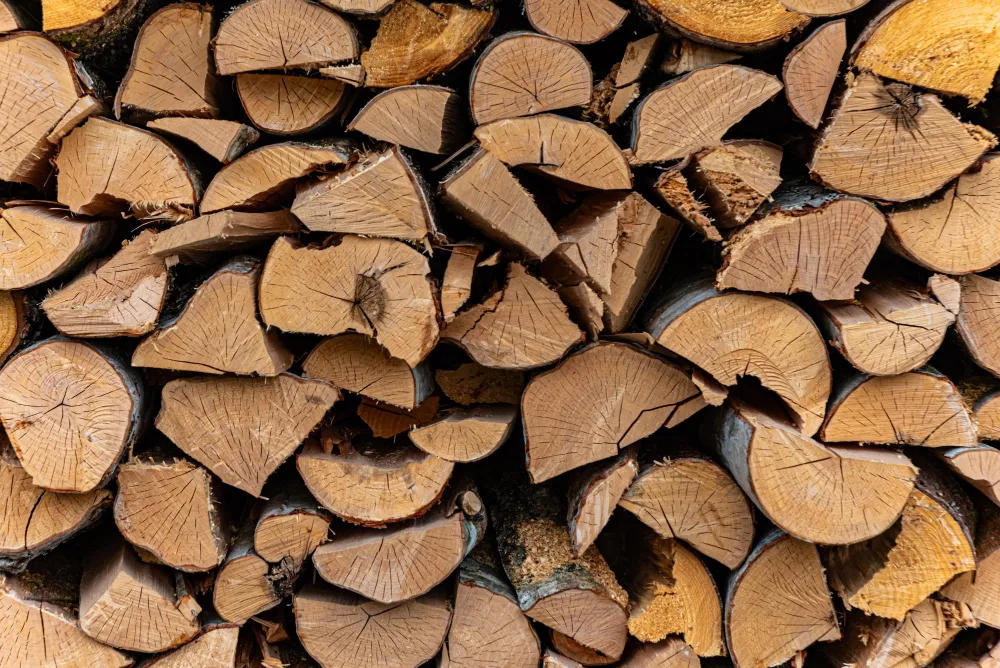
Cost Considerations
When choosing firewood for home heating or outdoor use, the cost of kiln-dried logs is often higher than other options, but the benefits can outweigh the initial investment. Below are some key factors to consider when evaluating the cost of kiln-dried logs:
a. Price Comparison with Other Firewood
Kiln-dried logs tend to be more expensive than seasoned or green logs due to the energy-intensive drying process. The additional cost covers the controlled environment used to reduce the moisture content to below 20%, ensuring a cleaner, more efficient burn. While naturally seasoned logs may seem cheaper, they often require longer drying times or additional seasoning by the user before they are suitable for burning.
b. Long-Term Savings Due to High Heat Output
Though the upfront cost is higher, kiln dried logs produce more heat per log compared to seasoned or green logs. The lower moisture content means less energy is wasted on evaporating water, resulting in higher combustion efficiency. This leads to fewer logs being required to produce the same amount of heat, potentially lowering the long-term cost of heating.
c. Reduced Maintenance Costs
Using kiln-dried logs can reduce the maintenance costs of your wood-burning appliance. The cleaner burn leads to less creosote buildup in chimneys and flue pipes, which reduces the frequency of cleaning and minimizes the risk of chimney fires. In the long run, you save money on chimney maintenance and stove upkeep.
d. Energy Efficiency and Fuel Savings
Because kiln-dried logs burn more efficiently and generate more heat per log, fewer logs are needed over time compared to wetter, less efficient alternatives. This reduces the overall amount of wood required throughout the heating season, lowering fuel consumption and potentially balancing the higher purchase price.
e. Bulk Buying vs Smaller Quantities
Kiln-dried logs can be more economical when bought in bulk. Many suppliers offer discounts for larger orders, making it cost-effective for households or businesses that use firewood regularly. Bulk buying also means you can stockpile logs for future use, avoiding potential price increases during peak seasons. For occasional users, smaller quantities might be more practical despite the higher per-log cost.
f. Transportation and Delivery Costs
Consider delivery costs when purchasing kiln-dried logs. Some suppliers offer free delivery for larger orders, while others charge based on distance or quantity. Factoring in transportation costs can make a difference in the overall value. If you have space to store logs, buying in bulk and taking advantage of free delivery options can offer significant savings.
g. Overall Value
While kiln-dried logs are generally more expensive, their superior performance, longevity, and lower maintenance costs offer a more cost-effective solution in the long run. If you prioritize convenience, high heat output, and cleaner burning, the investment in kiln-dried logs can provide better value compared to cheaper, less efficient firewood alternatives.
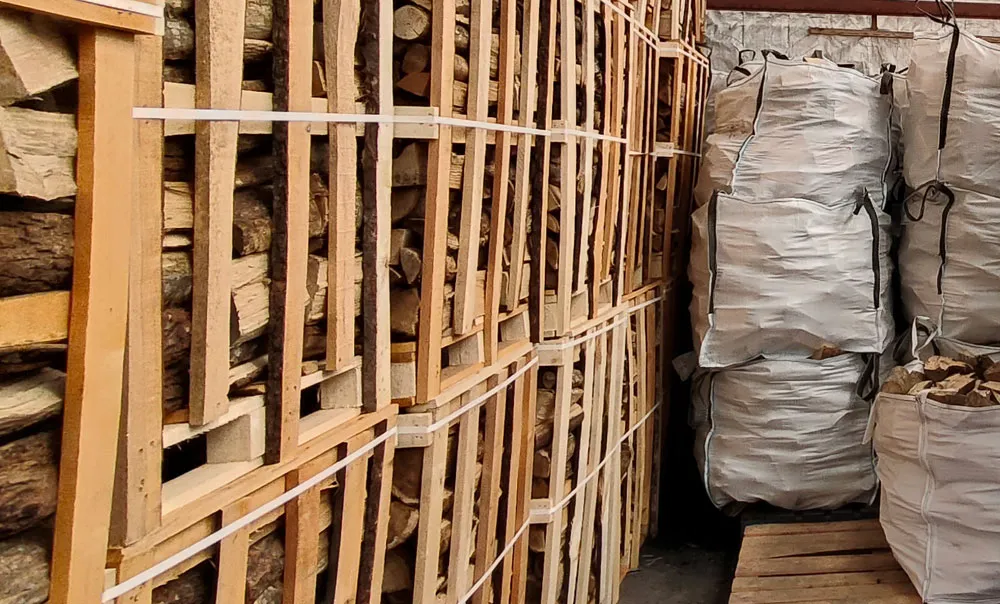
How to Choose the Best Kiln-Dried Logs
When selecting kiln-dried logs, there are several key factors to ensure you’re getting the best quality for efficient burning and long-term use. Here’s a guide to help you choose wisely:
1. Wood Type
- Hardwoods vs. Softwoods:
- Hardwoods (e.g., oak, ash, birch) tend to burn longer and produce more heat, making them ideal for wood-burning stoves and fireplaces.
- Softwoods (e.g., pine, spruce) ignite more quickly but burn faster, which can be beneficial for starting fires or short burning sessions.
- Hardwood Recommendation: Choose hardwood kiln dried logs for sustained heat and a more efficient burn, especially in colder months.
2. Moisture Content
- Kiln-dried logs should have a moisture content of 20% or less for optimal combustion and minimal smoke.
- Moisture Testing: Some suppliers provide moisture meters to test the logs yourself. Logs with moisture above 20% will burn less efficiently and may lead to soot buildup.
- Certified Moisture Levels: Look for suppliers that guarantee a moisture content of 20% or lower and are transparent about their drying process.
3. Size and Shape of Logs
- Uniform Size: Logs that are consistent in size and shape burn more evenly. This also makes it easier to stack and store the logs.
- Length of Logs: Ensure the logs are cut to a length suitable for your wood-burning stove or fireplace (commonly 25-30 cm).
- Split Logs: Split logs tend to dry more evenly and burn more efficiently than whole logs, so they are often preferred for optimal heating.
4. Source and Sustainability
- Certified Wood: Look for wood sourced from responsibly managed forests, ideally certified by the FSC (Forest Stewardship Council) or similar bodies. These certifications ensure that the wood is harvested sustainably.
- Local Suppliers: Buying from local or regional suppliers reduces the carbon footprint associated with transportation and often guarantees fresher stock.
5. Packaging and Storage
- Logs should be delivered in well-ventilated packaging to prevent rehydration. Avoid tightly sealed plastic packaging, which can trap moisture and cause the logs to degrade.
- Bulk Buying vs. Pre-Packaged: If you have proper storage, consider buying in bulk as it’s often more economical. Make sure you have a dry, sheltered place to store the logs.
6. Supplier Reputation
- Customer Reviews: Check online reviews and ratings to ensure the supplier is reputable and consistently provides high-quality kiln-dried logs.
- Transparency: A good supplier will be transparent about their drying process, wood source, and any guarantees they provide for the logs’ moisture content and quality.
- Delivery Options: Ensure the supplier offers reliable and timely delivery options, especially during peak burning seasons like winter.
7. Price Considerations
- Cost vs. Quality: While kiln-dried logs may be more expensive than seasoned or green logs, the investment is worthwhile due to their high energy output and long burning time.
- Compare Prices: Shop around to compare prices between different suppliers, but don’t sacrifice quality for a cheaper option. Cheaper logs may have higher moisture content, reducing their efficiency and increasing maintenance needs for your stove or chimney.
By considering these factors, you can choose the best kiln-dried logs that provide efficient heating, reduce smoke and soot buildup, and contribute to an eco-friendly wood-burning experience.
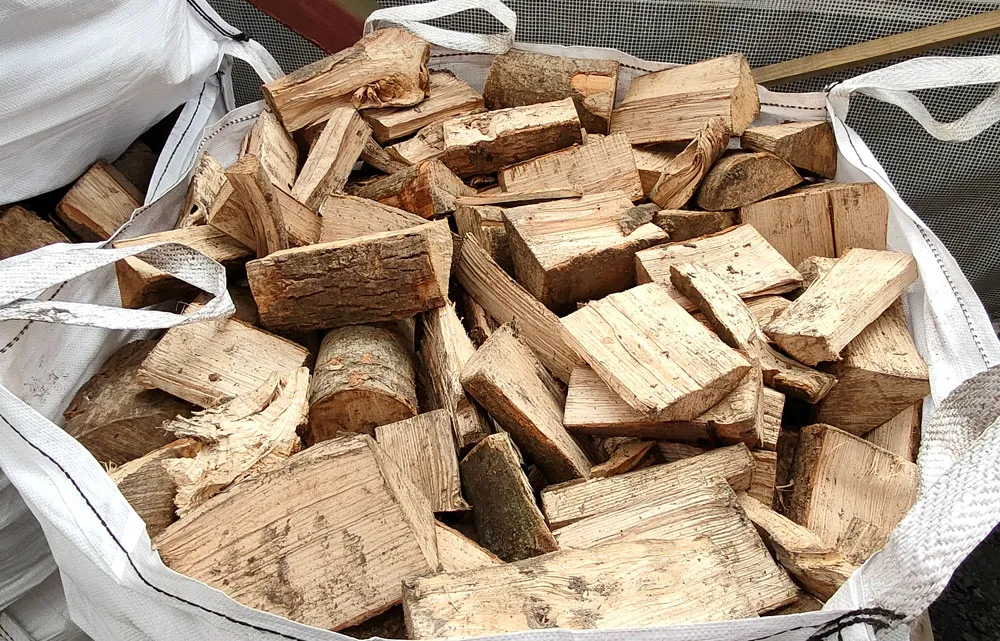
Kiln Dried logs in Ireland
Growing Demand for Kiln-Dried Logs
With the increasing focus on eco-friendly heating options and the unpredictable weather in Ireland, kiln-dried logs are becoming a popular choice for both homeowners and businesses. Their consistent quality, ease of use, and cleaner burn make them ideal for the Irish climate, where keeping logs dry naturally can be a significant challenge. Kiln-dried logs offer a more efficient and reliable heating solution, particularly during the wet and cold seasons.
Local Suppliers
There is a rising number of local suppliers offering kiln-dried logs in Ireland, often sourced from sustainable forestry. Many of these suppliers provide convenient delivery services across the country, ensuring that customers can access high-quality, ready-to-burn logs without hassle. Some of the more popular suppliers include Irish Kiln Dried Firewood, known for delivering high-quality hardwood kiln-dried logs; Finglas Fuels, offering competitively priced kiln-dried logs in Dublin and surrounding areas; and Premier Firewood Ireland, which specializes in premium-grade kiln-dried logs with nationwide delivery.
Types of Kiln-Dried Logs Available
In Ireland, kiln dried logs are available in a variety of hardwood and softwood options. Hardwoods such as ash, oak, and birch are favored for their longer burn times and higher heat output, making them an excellent choice for heating larger spaces. Softwoods like pine burn faster but are more affordable, making them suitable for those seeking quick, efficient heating at a lower cost. Each type of wood has its own benefits, and the choice depends on the specific needs and budget of the consumer.
Cost of Kiln-Dried Logs in Ireland
The price of kiln-dried logs in Ireland can vary depending on factors such as the type of wood, quantity purchased, and the supplier. On average, a bulk bag of kiln-dried logs costs between €80 and €120, with delivery options often influencing the final price. Buying in bulk for the winter season is a smart option for consumers looking to save money, as it generally offers more value compared to purchasing smaller quantities throughout the year.
Environmental Considerations
Many Irish suppliers of kiln-dried logs are committed to sustainability, sourcing their wood from responsibly managed forests. Consumers should look for certifications such as the FSC (Forest Stewardship Council), which ensures that the firewood has been harvested in an eco-friendly manner. Additionally, using kiln-dried logs helps reduce creosote buildup in chimneys, lowering the risk of chimney fires and reducing the frequency of required cleanings. This not only enhances safety but also improves the overall environmental impact of wood-burning as a heating method.
Where to Buy Kiln-Dried Logs in Ireland
Kiln-dried logs can be purchased from a range of online platforms, local garden centers, or specialized fuel suppliers. Many suppliers offer flexible delivery options, with some even providing next-day delivery to major cities like Dublin, Cork, and Galway. This convenience allows consumers to stock up on logs without the hassle of transportation or storage concerns.
Why Choose Kiln-Dried Logs in Ireland
Given Ireland’s damp and often rainy climate, naturally seasoned logs can take a long time to dry, resulting in inefficient burns and increased smoke. Kiln-dried logs, by contrast, are ready-to-use, providing a reliable and efficient heat source even during the wettest Irish winters. Their lower moisture content ensures a cleaner burn, producing more heat and less smoke, which makes them the ideal choice for anyone looking to enhance their home’s heating efficiency while minimizing their environmental footprint.
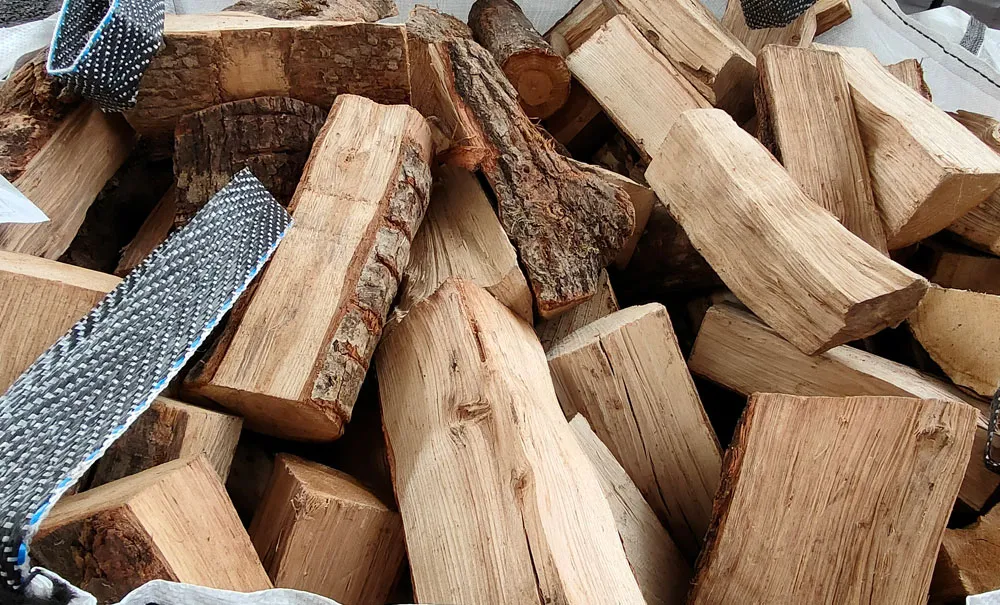
List of 30 kiln-dried log suppliers in Ireland:
- Finglas Fuels – Dublin-based supplier offering kiln-dried logs and firewood.
- Irish Kiln Dried Firewood – Nationwide delivery of premium hardwood logs.
- Premier Firewood Ireland – Specializes in high-quality kiln-dried logs with delivery.
- The Log Shack – Supplier of sustainably sourced kiln-dried hardwood.
- The Firewood Company – Offers kiln-dried hardwood logs across Ireland.
- Woodland Kiln Dried Logs – Kiln-dried firewood for stoves and fireplaces.
- Nugent’s Firewood – Provides hardwood kiln-dried logs in bulk.
- Ballydesmond Firewood – Cork-based kiln-dried wood and briquettes.
- Fuel Depot – Supplier of firewood and kiln-dried logs for homes.
- Glenealy Firewood – Kiln-dried logs delivered to Wicklow and surrounding areas.
- Solid Fuel Centre – Offers kiln-dried hardwood and softwood logs.
- Green Heat Firewood – Sustainable kiln-dried logs for efficient burning.
- Timber Ireland – Supplies kiln-dried firewood and logs.
- The Fireplace Company – Sells premium kiln-dried firewood in Dublin.
- Clane Firewood – Kiln-dried logs with delivery throughout Leinster.
- Firewood Ireland – Supplier of kiln-dried logs for wood burners and open fires.
- Celtic Logs – Cork-based supplier of kiln-dried and seasoned firewood.
- Derry Logs – Kiln-dried logs available in Northern Ireland.
- Donegal Firewood – Provides kiln-dried logs with nationwide delivery.
- Kiln Dry Firewood – Sustainable, kiln-dried hardwood firewood supplier.
- McGrath Firewood – Kiln-dried hardwood and softwood logs.
- Firewood.ie – Supplier of kiln-dried logs with quick delivery services.
- Eco Logs Ireland – Specializes in eco-friendly kiln-dried firewood.
- Woodco Energy – Offers kiln-dried firewood along with renewable energy solutions.
- Kelly Firewood – County-based firewood supplier, including kiln-dried options.
- Sweeney Logs – Quality kiln-dried firewood for stoves and fireplaces.
- Boora Logs – Based in Offaly, offering kiln-dried hardwood firewood.
- The Big Fire – Sells premium kiln-dried firewood with nationwide delivery.
- Rite Fuel – Kiln-dried firewood available across Ireland.
- Irish Firewood – Offers kiln-dried hardwood and softwood logs.
These suppliers deliver throughout Ireland and offer a range of options for kiln-dried firewood tailored to various heating needs.
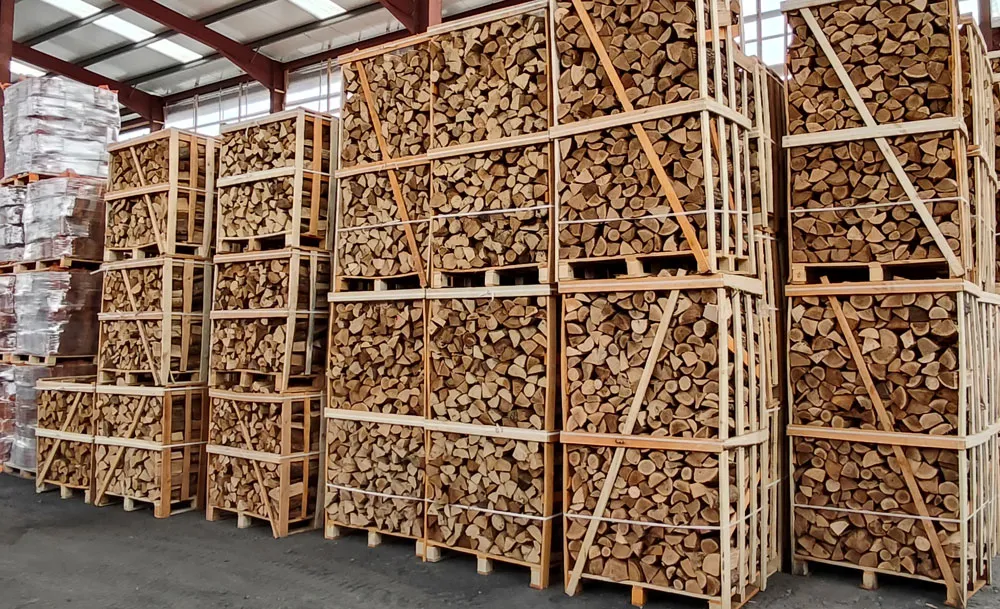
Kiln-Dried Logs Price Guide in Ireland (2024-2025)
The prices of kiln-dried logs in Ireland can vary depending on the type of wood (hardwood vs. softwood), the quantity purchased, and delivery options. Below is a breakdown of the typical costs for kiln-dried logs in 2024:
1. Hardwood Kiln-Dried Logs
- 1 Net Bag (approx. 10-12kg): €7 – €12
- Bulk Bag (approx. 1m³): €120 – €160
- Half Bulk Bag (approx. 0.5m³): €70 – €90
- Pallet of Kiln-Dried Logs (approx. 2m³): €250 – €320
- Crate (approx. 1.5m³ stacked): €200 – €280
2. Softwood Kiln-Dried Logs
- 1 Net Bag (approx. 10-12kg): €5 – €8
- Bulk Bag (approx. 1m³): €80 – €120
- Half Bulk Bag (approx. 0.5m³): €50 – €70
- Pallet of Kiln-Dried Logs (approx. 2m³): €180 – €250
- Crate (approx. 1.5m³ stacked): €150 – €220
3. Mixed Kiln-Dried Logs
- Bulk Bag (approx. 1m³): €100 – €140
- Half Bulk Bag (approx. 0.5m³): €60 – €80
4. Delivery Charges
- Local Delivery: Often free within 10-20 km of supplier
- Nationwide Delivery: €10 – €50 depending on distance and supplier
- Pallet Delivery: Some suppliers offer free delivery on pallets or bulk orders over a certain price (e.g., orders over €250)
5. Bulk Discounts
- Many suppliers offer bulk discounts for larger orders, especially for pallet and crate purchases.
- Seasonal Discounts: During off-peak seasons (spring/summer), some suppliers reduce prices to clear stock. Discounts of up to 10-20% may be available.
Factors Influencing Price
- Wood Type: Hardwoods like oak, ash, and beech are more expensive due to their longer burn times and higher heat output. Softwoods such as pine are cheaper but burn more quickly.
- Sourcing & Sustainability: Certified, sustainably sourced wood (e.g., FSC-certified) may carry a premium price.
- Log Size & Moisture Content: Logs that are larger or have a lower moisture content may be priced higher due to their efficiency.
In 2024-2025, Irish consumers can expect to pay between €80 and €160 for a bulk bag of kiln-dried logs, depending on the type of wood and supplier. Ordering in bulk, especially in the off-season, can provide significant cost savings. Delivery fees are also a key consideration, though many suppliers offer free delivery for large orders.
Conclusion
Kiln-dried logs offer a highly efficient, clean-burning, and environmentally friendly solution for heating. With their low moisture content, they produce more heat, burn cleaner, and are easier to store compared to other firewood options. Whether you’re using a wood-burning stove, fireplace, or outdoor fire pit, kiln-dried logs provide convenience and long-term savings due to their superior combustion and reduced creosote buildup. Additionally, responsibly sourced kiln-dried logs contribute to a more sustainable approach to wood heating. For anyone looking for a reliable and efficient firewood option, kiln-dried logs are an excellent choice.
4o











